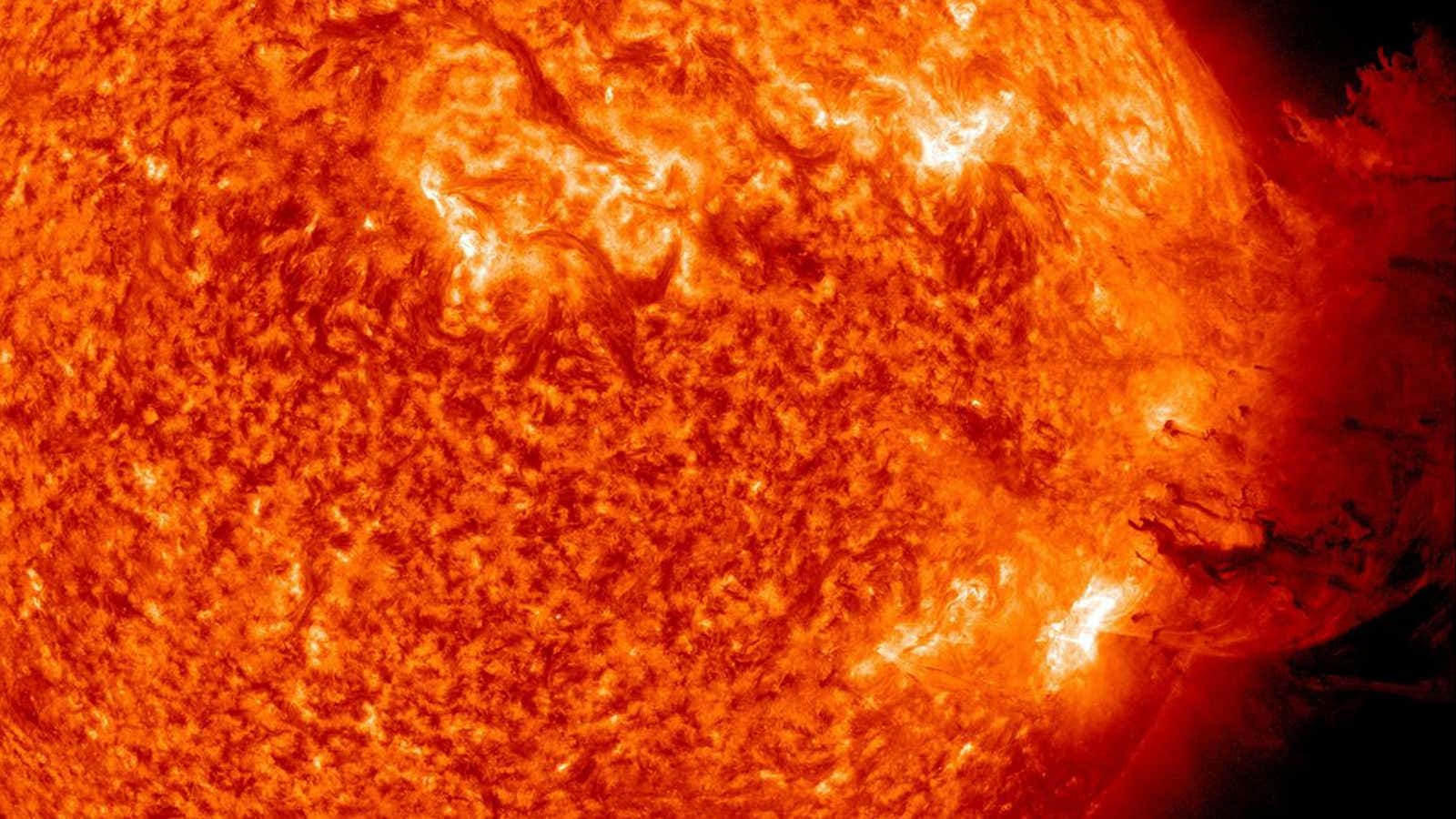A report in the journal Space Weather might have solved a Vietnam War mystery—and shed light on just how much solar activity can interfere with technology on Earth.
Every now and then, solar flares (powerful explosions of magnetic energy on the surface of the Sun) and coronal mass ejections (plasma clouds released from the Sun) can cause solar storms. The electromagnetic radiation they emit can interfere with communications systems. New research explored the consequences of one particular storm in 1972.
“The extreme space weather events of early August 1972 had significant impact on the US Navy, which have not been widely reported,” wrote the authors of the study team led by Delores Knipp, professor of engineering at the University of Colorado Boulder. “These effects, long buried in the Vietnam War archives, add credence to the severity of the storm: a nearly instantaneous, unintended detonation of dozens of sea mines south of Hai Phong, North Vietnam.”
These American mines’ magnetic detonators were designed to be set off when a ship passed nearby. However, the solar storm—happening on a star more than 90 million miles away—was enough to trigger them. In fact, according to the study, the electromagnetic pulse from the coronal mass injection that eventually set off the sea mine reached Earth in a record 14.6 hours (it usually takes up to two days). The study also notes that additional effects of the storm included radio blackouts, a visible aurora in parts of the UK and Spain, and damage to solar panels to orbiting satellites.
Newly declassified Navy documents reveal that officials suspected solar activity was the cause of the sea mines detonating, but those records weren’t fully examined until the investigation in Space Journal, Gizmodo reports. The authors of the study also called the solar activity in 1972 a “Carrington-class storm,” which refers to a geomagnetic storm in 1859 that remains the most powerful on record.
If a solar storm comparable to Carrington occurred again, modern technology would be wiped out, researchers at the Space Weather Prediction Center in Boulder, Colorado told National Geographic. The catastrophic damage would include huge power outages and break down communication networks. In 2017, analysts at the Harvard-Smithsonian Center for Astrophysics estimated that costs from such an event would equal the GDP of the US. Some scientists believe that such extreme solar activity could occur within the next 100 years.
Knipp told Yahoo Finance that by examining how a solar storm detonated the sea mines, scientists can better understand solar activity in the future. “What this event does is give us a sense of range of what these great storms could look like,” Knipp said.
